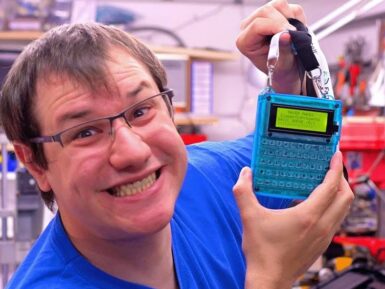
Overview
The DFRobot Expansion shield introduced to the market the famous color code for sensors and actuators input and output. The 3 pin format for Signal, Voltage and Ground is extremely useful, specially if used altogether with our increasingly large range of modules, sensors and devices that just fit. Alternatively, the board includes power input for salvaged power supplies or laboratory power supplies. Very common Xbee socket for multipurpose wireless connectivity such as RF, wireless, bluetooth.
The new version includes a voltage hardware setting through a jumper to allow compatibility with a bigger range of components at 3.3v. It also includes a Servo external power, with a protective diode. This way you can enable a large range of servos from your Arduino.
Latest version features a convenient switch that lets you program your ATmega328 boards like UNO, while you have another Serial device connected like a Xbee. Switch it, program it and get it back up and running with another switch. You don't need to disassemble your hardware or wiring. A LED on top board and a reset button is in order to make it just a natural extension to Arduino boards. The LED is connected to pin 13.
Features:
- Compatible with the Arduino Due
- 3.3V/5V operating voltage select
- Switch for wireless communication & programme
- More Easily recognitive interfaces
- Colorful header for illustrating digital or analog pins
- Immersion gold surface
Tech specs
- Input Voltage
- 7-12V, PWR_IN
- 4.8-6V, SERVO_PWR, depending on your servo
- Compatible module voltage: 5V/3.3V
- Support interface: I2C, SPI, Xbee (Xbee pro), Bluetooth, APC220
Get Inspired
Max out the digital I/O on the Arduino Uno Rev3!

Although we recently launched the new 32-bit Arduino UNO R4, Clem Mayer wanted to honor its 8-bit predecessor by making something special using the Rev3. Drawing on old hardware designs, the ZX-81 is an 8-bit computer based on the Z80 processor which has 1KB of RAM and 1KB of EEPROM available for the user to utilize within the operating environment — typically a BASIC interpreter shell. Similarly, Mayer wanted to have one ATmega328P run the TinyBASIC interpreter while a secondary ATmega328P would handle the external keyboard and display due to resource constraints. The PCB was designed to fit within the form factor of a standard event badge, complete with a small multiplexed keyboard and a 20x4 monochrome LCD screen to fit the retro theme. On the back layer of the board are both AVR MCUs in a surface-mount package to save on space along with a pair of battery holders and a buzzer/power delivery circuitry. Although the code was working for the most part, Mayer still encountered a couple of problems which he solved mainly through bodges and ensuring the LCD was producing adequate contrast. Once the hardware was functioning as intended, he 3D-printed a case and turned it into a lanyard-attached device — complete with blinky lights and a highly interactive interface. The finished handheld computer badge is a testament to the power and versatility of the Arduino Uno R3. By utilizing all available pins and space on the chip, Clem successfully transforms the Arduino Uno into a handheld computer with capabilities like the ZX-81. The project serves as a fitting tribute to the beloved Arduino UNO R3 and showcases the potential for DIY electronics with microcontrollers. To see more on this project, be sure to watch Mayer's video below!






